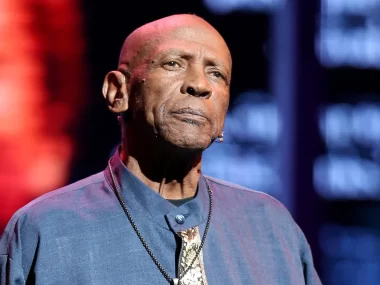|
Neubauer Coporation
Getting your Trinity Audio player ready...
|
Why did Netflix just drop a huge dump of viewing stats? In a nutshell: Because it can.
The streaming giant this week released its first “Netflix Engagement Report,” inclusive of more than 18,000 titles and nearly 100 billion hours viewed between January-June 2023 — representing 99% of all viewing during that period. And notably, for the first time, Netflix divulged streaming performance metrics for licensed content.
Why is co-CEO Ted Sarandos seemingly Mr. Data Transparency all of a sudden? Yes, Netflix has been under pressure from partners and talent to provide a deeper data dive: having access to more granular streaming numbers was a key agenda item in the SAG-AFTRA and WGA strike negotiations.
But essentially, Netflix’s mammoth spreadsheet showing six months of hours viewed per title is an opportunity for Sarandos & Co. to brag about the platform’s gonzo engagement and reach across more than 247 million (and counting) customers worldwide. Sarandos, in discussing the report with press Tuesday, acknowledged that Netflix had been reluctant to release an expansive set of viewing data for competitive reasons. He also reiterated that Netflix didn’t want to saddle creators with overnight ratings and weekend box office figures as defining their success or failure.
Ultimately, however, the opportunity to show the enormity of Netflix’s streaming audience carried the day.
One example: Netflix reported 249.9 million hours viewed for “The Mother,” the action-hero movie starring Jennifer Lopez as an assassin who emerges from hiding to protect her daughter that hit the streamer May 12. LightShed Partners analysts estimated about 127 million households (and more than 250 million people) watched “The Mother” — in just the first six weeks of its release. That would make it the biggest movie of 2023 after Greta Gerwig’s “Barbie” and Universal Pictures’ “The Super Mario Bros. Movie” in terms of eyeballs.
“In a streaming world, engagement is the north star and direct-to-Netflix feature films are driving an absurd level of engagement,” the LightShed analysts Rich Greenfield, Brandon Ross and Mark Kelley wrote in a blog post.
It’s not possible to do an apples-to-apples comparison of streaming viewers with box-office revenue generated by theatrical releases, as the LightShed team noted. That is, we don’t know how many theatergoers would have paid to see “The Mother” in a cinema. But for Netflix, the equation is different. “With strong engagement relative to a film’s cost that improves the price/value relationship of a Netflix subscription, mitigates churn, and enables future price increases, maybe direct-to-consumer films are blockbusters, just different forms of blockbusters,” the LightShed analysts concluded.
Meanwhile, by reporting the relative performance of licensed content on Netflix, the company can promote itself as the marquee outlet for turning sleepy library content into new hits. Sarandos cited Netflix’s launch of “Suits” this summer — nearly four years after it ended its run on USA — which made the show into a buzzy new binge-watch for millions. “That’s the combination of our large subscriber base and our recommendation system that knew to put ‘Suits’ in front of people who were going to love it the most,” Sarandos boasted.
The biannual report also should help Netflix’s advertising-sales efforts, according to Dan Salmon, U.S. internet research analyst at New Street Research. “While large advertisers will insist on third-party measurement, small and medium advertisers have a lower bar and may not require it,” he wrote in a research note.
More broadly, Netflix’s release of a trove of more data will result in more publicity — and that should result in “more mindshare in the media-buying community,” Salmon wrote. By releasing the big reports twice per year, Netflix’s engagement report will be “a less frequent, but bigger event,” he added.
Of course, there are caveats. The twice-a-year Netflix Engagement Report is still just a snapshot in time of streaming viewing, even though it’s a massively supersized version of the Top 10 lists it has released since February 2020. Because of varying premiere dates, it remains difficult to compare performance of titles. The most-viewed Netflix title in the first half of 2023 was original series “The Night Agent”; however, Netflix’s No. 1 overall most-viewed English-language of all time remains “Wednesday,” which bowed Nov. 23, 2022.
And the data in the “Netflix Engagement Report” is self-reported — it isn’t vetted or audited by an outside party. Sarandos’ response? “I’m the co-CEO of a public company, so sharing bad information has consequences,” he said, asserting that “this is the actual data that we use to run the business.” Nielsen does require validation for Netflix ad-supported content, he noted. But to read between the lines, what he’s suggesting is that, say, the threat of shareholder lawsuits is a good guarantee that Netflix isn’t fabricating these numbers.



























































